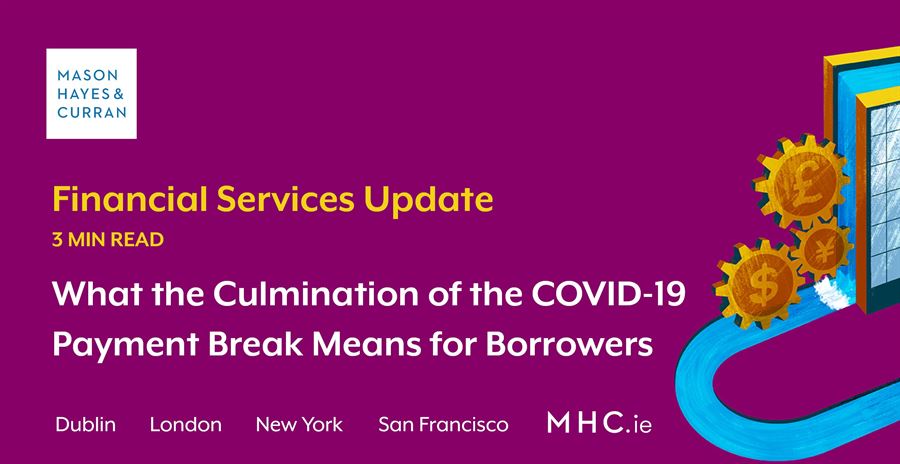
A COVID-19 payment break is where a qualifying borrower agreed with their lender to postpone or reduce loan repayments for an agreed period of time. Payments on mortgages, personal loans and business loans may be deferred for up to six months for customers facing financial difficulties due to COVID-19. The government has announced this scheme will stop accepting new applications from 30 September.
What does the announcement mean?
The repayment breaks were introduced in March to support homeowners, households and businesses that were experiencing a decline in income and business caused by COVID-19 restrictions. The breaks were initially available for three months, but were extended for a further three months due to severity of the economic situation.
The liquidity relief supplied by the scheme has been crucial in providing breathing space for borrowers during the crisis. At their peak in June 2020, more than 220,000 loans in Irish retail banks (representing over €27 billion in lending) were utilising a payment break. 25% of borrowers remain active on their first three month payment break while 34% have received an extension.
It is important to note that the announcement does not signal that the payment holiday ceases from 30 September. Rather, this is the final date on which a borrower can apply for a payment break.
What happens now?
Rather than depending on a systemic blanket policy to address borrowers coming off COVID-19 payment breaks, the emphasis of the government, the Banking & Payments Federation Ireland (BPFI) and retail banks will focus on offering forbearance solutions on a case-by-case basis to those completing their agreed payment break period.
The BPFI have said that the five main banks have designated 2,500 staff to engage with borrowers and put bespoke solutions in place for the borrower’s specific circumstances.
What options have borrowers going forward?
As has been noted by the Governor of the Central Bank Gabriel Makhlouf, there is nothing which prevents banks from allowing further payment breaks.
Borrowers should be aware that entering into a new/further payment break outside of those permitted as part of the initial scheme may negatively impact on their credit rating; but it can recover should they be able to return to full repayments in the future. Further breaks will also result in higher monthly payments over the borrowing term.
Banks have committed to and will be proactive in contacting customers going forward. As well as lenders considering the acceptance of reduced payments or the borrower paying interest-only for a period, borrowers may be invited to extend the borrowing term. These options may cost more over time in interest, but give further flexibility to residential and commercial borrowers and their cash-flow during the period of uncertainty.
Conclusion
While no single measure will be successful in resolving distressed debt, the breathing room provided by payment breaks has greatly assisted borrowers in weathering the uncertainty of 2020. After the six-month shield of the payment break, the onus now returns to borrowers and lenders in unearthing sustainable solutions.
Our overall financial system will benefit from lenders taking a candid up-front view of repayment capacity and planning solutions appropriate to all circumstances. It is key that borrowers and lenders engage early and often in order to prevent the build-up of arrears and to put in place realistic restructures that see borrowings through to maturity.
For more information on the continuing impact of COVID-19, contact a member of our Financial Services team.
The content of this article is provided for information purposes only and does not constitute legal or other advice.
Share this:





